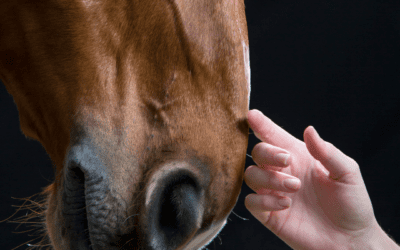Review of “Association between quantitative bacterial culture of bronchoalveolar lavage fluid and antibiotic requirement in dogs with lower respiratory tract signs”
by Ruth Cawston
Introduction
The coughing dog is a common clinical presentation in veterinary practice, but one that can often pose a diagnostic challenge. In particular, the decision of whether or not to treat a chronically coughing dog with antibiotics can be hard to judge based on clinical presentation alone, and the lack of response to treatment with antimicrobials often does not rule out a bacterial infection.
Sampling fluid from dogs’ lower airways is an important part of a diagnostic workup for a coughing dog. This is can be done by transtracheal wash (TTW), bronchoalveolar lavage (BAL), or occasionally by percutaneous fine needle aspiration (FNA). Once the fluid has been obtained, cytology can characterise the type of inflammation, culture can isolate any conventional bacteria and look for antibiotic resistance, and an increasing range of PCR tests can pinpoint viral or unusual bacteria, too.
Interpreting bacterial culture results from respiratory samples is not always straightforward. Canine airways have their own natural bacteria flora, and there can be a significant cross-over between these commensal agents and pathogenic infections. All of the sampling methods also run the risk of contamination, either from the oral cavity (BAL), upper respiratory tract (BAL and TTW) or skin (TTW or FNA).
Quantitative bacterial culture has sometimes been used to try and distinguish between pathogens and commensals or contaminants, but studies examining the reliability of this method have been lacking, and expert opinion has been divided on the usefulness of this technique. This recent study aims to provide some solid data on how well this test performs when it comes to predicting whether a dog needs treatment with antibiotics.
How was this study run?
This cross-sectional study took historical data from dogs who had had quantitative culture performed on their BAL samples at a single referral facility in France. They then divided these dogs into two groups – those who had ultimately needed treatment with antibiotics, and those who had not – and compared the number of bacteria cultured from the samples in each group.
What were the results of this study?
The authors identified thirty-three dogs who fit the inclusion criteria. Of these, twenty-two dogs had needed treatment with antibiotics, and eleven had not.
The number of bacteria that were grown from the BAL fluid was not significantly different between the two groups of dogs, suggesting that quantitative culture is an unreliable guide as to whether a dog will benefit from treatment with antibiotics or not.
If quantitative bacterial culture had been used as a guideline for antibiotic treatment, then nearly two-thirds of the dogs who did not require them would have received them unnecessarily.
Is this study likely to be reliable?
There are several reasons to think this study may not be as reliable as we might like.
This was an observational study, meaning the results are likely to be influenced by natural variations in the way that clinicians perform diagnostic tests and make decisions, as well as in the way that patients respond to those treatments. Interventional studies are preferred over observational ones as they can control for many of these variables.
The sample size in this study was also quite small – only thirty-three dogs in total, and only eleven in one of the groups. This means that a few unusual results could strongly affect the outcome of the study, making it less reliable.
It is difficult to judge how effective the treatments were in this study. Illness can wax and wane, and indeed dogs can spontaneously get better without treatment (as was the case with one patient here), so we cannot say for certain that the dogs improved because of the treatment that they were given. In particular, we have no way of knowing if the dogs who were treated with antibiotics would have improved without treatment. If some of these patients had been given antibiotics unnecessarily, then this could have altered the results of this study. This is a general issue with observational studies, but it would be difficult to design an interventional study (where the patients’ treatment was decided by the study design) without affecting the dogs’ welfare.
Overall, we should be cautious about using the results of this study as a strict guide on how to make decisions. However, all vets have a responsibility to use antimicrobials judiciously and to reduce their use of them where possible. Even though this is only a small observational study, it does suggest that we should look for other pieces of diagnostic evidence outside of quantitative bacterial culture when deciding whether to treat our coughing canine patients with antibiotics.
Conclusion
Bronchoalveolar lavages are useful tests for a number of different reasons, and the culture of BAL fluid can be useful to identify organisms and assess antimicrobial sensitivities in cases of suspected bacterial infection. However, the number of bacteria grown from these samples may not be a reliable guide in understanding whether or not our patients need treatment with antibiotics.



